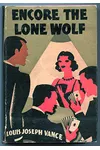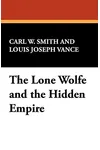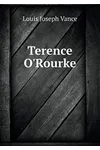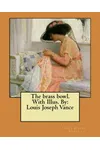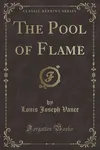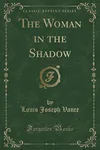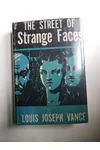Picture an American storyteller who spun tales of cunning thieves and daring detectives, captivating readers in the early 20th century—meet Louis Joseph Vance! Best known for creating Michael Lanyard, the suave jewel thief turned private eye dubbed The Lone Wolf, Vance crafted mysteries that thrilled audiences across books, films, and radio. His knack for blending high-stakes adventure with vivid settings made him a pulp fiction star.
Born in 1879, Vance’s life was as intriguing as his stories. From his Washington, D.C., roots to his tragic end, he left a legacy that still sparks curiosity. Let’s dive into the world of this mystery maestro and uncover why his tales remain timeless.
The Making of Louis Joseph Vance
Louis Joseph Vance entered the world on September 19, 1879, in Washington, D.C., the only child of Wilson J. Vance, a Medal of Honor recipient, and Lillian Beall. Educated at the Brooklyn Polytechnic Institute, Vance initially dabbled in short stories and poetry after 1901, but his true calling emerged in novel-writing. Married to Anne Elizabeth Hodges in 1898, with a son born in 1900, Vance balanced family life while honing his craft, drawing inspiration from the bustling urban landscapes of early 20th-century America.
His early career took him from New York to Los Angeles, where he worked with Universal Pictures, adapting his stories for the silver screen. This blend of literary and cinematic storytelling shaped his dynamic, action-packed style, setting the stage for his most famous creation.
Louis Joseph Vance’s Unforgettable Stories
Vance’s literary crown jewel is The Lone Wolf, a 1914 novel introducing Michael Lanyard, a gentleman thief with a knack for outsmarting criminals and cops alike. Set in Paris, the story follows Lanyard’s transformation from master crook to detective, weaving romance, suspense, and early airplane battles. The series spanned eight books, including The False Faces and Alias the Lone Wolf, each brimming with international intrigue.
Beyond The Lone Wolf, Vance penned The Brass Bowl (1907), a gripping tale of mistaken identities and stolen jewels, showcasing his flair for intricate plots. His 1914 novel The Trey o’ Hearts, adapted into a film serial, blended melodrama with adventure, while Red Masquerade explored the legacy of Lanyard’s daughter. Vance’s style—vivid, fast-paced, and occasionally wordy—captured the era’s fascination with crime and redemption, though some critics noted his plots stretched believability.
His settings, especially Paris, felt alive, reflecting his apparent firsthand knowledge. Readers loved the escapist thrill, making his books a staple of early 20th-century pulp fiction, rivaling contemporaries like The Scarlet Pimpernel.
Why Louis Joseph Vance Matters
Vance’s impact lies in his creation of The Lone Wolf, a character who transcended books to become a cultural icon. Featured in 24 films from 1917 to 1949, plus radio and TV series, Michael Lanyard influenced the archetype of the reformed rogue, echoing in modern characters like James Bond. Actors like Warren William and Gerald Mohr brought Lanyard to life, cementing Vance’s Hollywood legacy.
Despite his tragic death in 1933—caused by a cigarette igniting benzene in his New York apartment—Vance’s stories endure. His ability to blend gritty crime with romantic heroism paved the way for the detective genre, making him a hidden gem for mystery fans to rediscover.
- Born: September 19, 1879, Washington, D.C.
- Key Works: The Lone Wolf (1914), The Brass Bowl (1907), The Trey o’ Hearts (1914)
- Notable: Created The Lone Wolf, adapted into 24 films
- Died: December 16, 1933, New York City
Snag The Lone Wolf and dive into Vance’s thrilling world of mystery and adventure!






